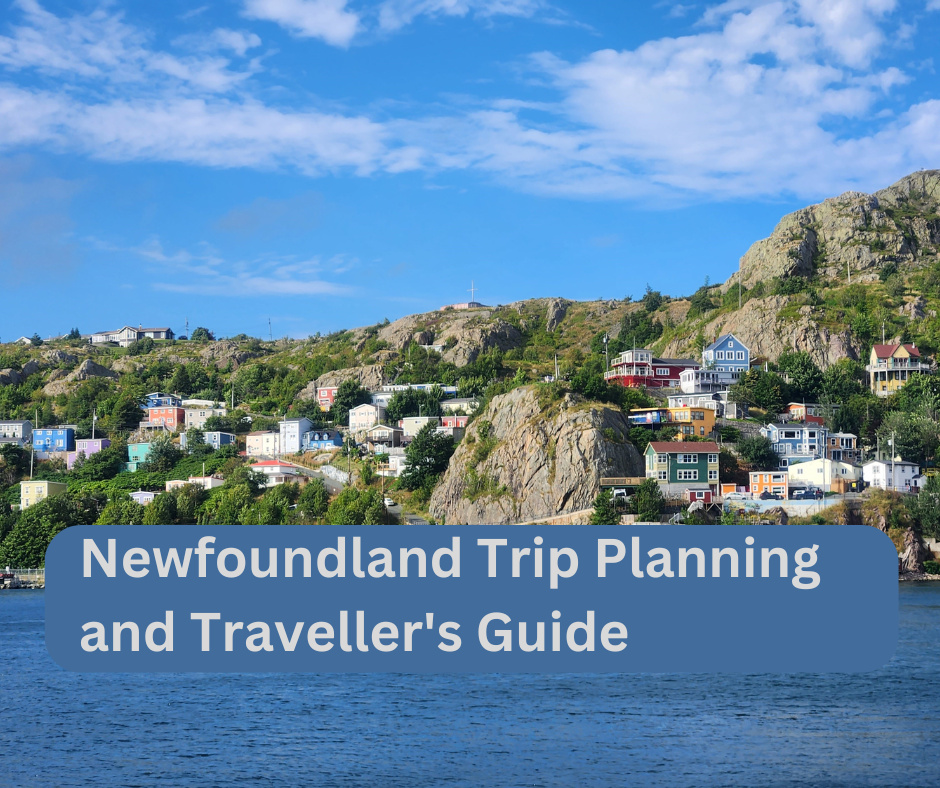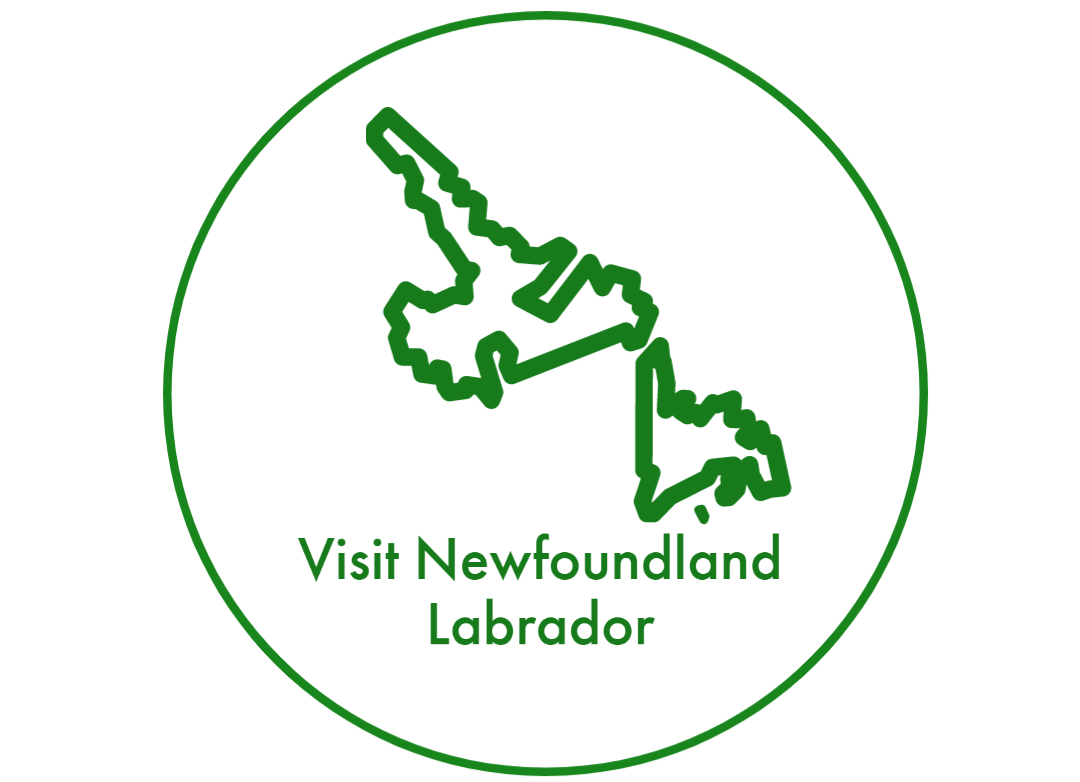The best time to get Trip Cancellation, Interruption or Delay
This is the best time to get Trip Cancellation Interruption or Delay coverage. Everyone is excited for Come Home Year to visit friends and family and vacation in Newfoundland and Labrador. Unfortunately, many travellers are having their flights cancelled or interrupted. Here are some tips and guidance if your flights are cancelled or interrupted.
If you have a Premium Travel Credit Card and use it to book your flight, you can call your credit card company and see if you have coverage for Trip Cancellation and Trip Interruption. If you have coverage on your credit card, explain your situation to the customer service representatives and start a claim. These are the best travel credit card to book your trip. We look at multiple Premium Travel Credit Card that offers trip cancellation, trip interruption, medical coverage and other benefits that will make your trip better. Overall the Premium Travel Credit Card that provides these coverages is perfect for booking your trip.
Most credit card companies are very good at processing claims. They will inform you of the documents they will need to complete the claim process and update you periodically on the processing of your claim. In addition, you are entitled to compensation by the law of some countries like Canada, Europe and the United States if your flights have been cancelled or interrupted due to specific events.

Trip Cancellation, Interruption or Delay Coverage
You can connect with your airline company or let one of our air compensation partners handle the process for you. For example, AirHelp and Compensateair will help you with flight delays, cancellations, or denied boarding. All you need to do is to submit your flight details, and they will handle the claim process on your behalf. In addition, they will handle all the paperwork, airline negotiations, and legal proceedings.
Air Passenger Rights is an independent nonprofit organization of volunteers. That provides travellers with information about their rights and how to enforce them against airlines.
If you have just started planning your trip, ensure you have trip cancellation, trip interruption and medical coverage. No matter where your next adventure takes you, ensure you are covered for the unexpected. You can get coverage here.
Coverages such as trip cancellation, trip interruption, trip delay, and baggage loss are included in most policies. It is better to have it than not to have it and need it.
Travelling to Newfoundland and Labrador. Travelers also ask.

What is St. John’s Famous For?
St. John’s, the capital city, is famous for its rich history, colourful row houses, and vibrant cultural scene. It is home to one of Atlantic Canada oldest continuously operating lighthouses, located at Cape Spear. St. John’s is also renowned for its music and arts festivals, including the George Street Festival, which celebrates the city’s vibrant nightlife.
Is St. John’s, Newfoundland, Worth Visiting?
Yes, St. John’s is worth visiting. St. John’s offers a unique blend of history, culture, and natural beauty. The city features picturesque landscapes, historic sites such as Signal Hill, and a lively downtown area. Visitors often praise its friendly locals, charming architecture, and rugged coastline that provides stunning views.
What is the Famous Street in St. John’s, Newfoundland?
George Street is the most famous street in St. John’s, known for having the most bars and pubs per capita in North America. It is the hub of the city’s nightlife, hosting various music and cultural festivals throughout the year.
Is St. John’s Newfoundland a Walkable City?
Yes, St. John’s is a walkable city, especially in the downtown area. The streets of St. John’s are lined with historic buildings, shops, restaurants, and cafes, making it easy to explore on foot. However, the hilly terrain can be challenging in some areas.
What is the Best Month to Visit Newfoundland?
The best month to visit Newfoundland is July. The weather is warm during this time, and many festivals and events occur. The icebergs are also visible along the coast, and the puffin population is at its peak.
What is Special About St. John’s, Newfoundland?
St. John’s is notable for its rich Atlantic history, colourful Jellybean Row houses, and breathtaking natural surroundings. The city is also known for its vibrant arts scene, delicious seafood, and the unique cultural practice of “screeching-in” ceremonies.
Why is Newfoundland So Cheap?
Newfoundland is relatively cheap compared to other Canadian destinations due to its lower cost of living and less commercialized tourism industry. Accommodations, food, and activities are generally more affordable, making Newfoundland an attractive destination for budget-conscious travellers.
What is the Best Way to Tour Newfoundland?
The best way to tour Newfoundland is by car. Renting a car allows you to explore the island’s remote areas, scenic drives, and small towns at their own pace. Guided and boat tours are famous for specific attractions like icebergs and whale watching.
Is St. John Newfoundland Expensive?
St. John’s is moderately priced compared to other major Canadian cities. While dining and accommodations can vary in price, it is considered affordable, especially given the unique experiences and natural beauty it offers.
What is the Best Part of Newfoundland?
The best part of Newfoundland is subjective, but Gros Morne National Park is often highlighted for its stunning fjords, mountains, and diverse wildlife. Other popular areas include the Bonavista Peninsula, Twillingate for iceberg viewing, and the scenic Irish Loop.
What is Getting Screeched In St John’s?
“Getting screeched in” is a traditional ceremony in Newfoundland where visitors become honorary Newfoundlanders. The ritual involves reciting a short pledge, taking a shot of Screech rum, and kissing a codfish.
What is the Average Cost of Living in St. John’s?
The average cost of living in St. John’s is relatively low compared to other Canadian cities. Rent for a one-bedroom apartment in the city center averages around CAD 900-1,200 per month. Groceries, utilities, and transportation are also reasonably priced.
Is Newfoundland Expensive to Visit?
Newfoundland is not particularly expensive to visit. Price may vary depending on the season and type of accommodations chosen, but overall, it is more affordable than many other popular Canadian destinations. Budget-conscious travellers can find many free or low-cost activities.
What to Wear in Newfoundland?
Due to the variable weather, it is essential to dress in layers when visiting Newfoundland. Bring waterproof and windproof clothing, comfortable walking shoes, and warmer layers, even in summer. A hat and gloves are advisable for cooler days and evenings.
What is the Best Month to See Icebergs in Newfoundland?
The best month to see icebergs in Newfoundland is May. Icebergs drift along the coast from spring to early summer, with May offering the highest likelihood of sightings. June is also a good month for iceberg viewing.
What Should I Pack for St. John’s, Newfoundland?
When packing for St. John’s, Newfoundland, include layered clothing, a waterproof jacket, comfortable walking shoes, and warm accessories like hats and gloves. Remember essentials like sunscreen, insect repellent, and a camera to capture the stunning scenery.
What is the Crime Rate in St John’s, Newfoundland?
St. John’s has a relatively low crime rate compared to other Canadian cities. The city of St. John’s is generally considered safe for residents and visitors alike.
Why Do People Love Newfoundland?
People love Newfoundland for its stunning natural beauty, friendly and welcoming locals, rich history, and unique cultural experiences. The rugged coastline, quaint fishing villages, and opportunities for outdoor activities like hiking trails and whale watching are significant draws.
How Many Days Do You Need in Newfoundland?
To experience the highlights of Newfoundland, a minimum of 15-20 days is recommended. This allows time to explore major attractions like Gros Morne National Park, St. John’s, and the Bonavista Peninsula without feeling rushed.
Do You Need Cash in Newfoundland?
All major payment credit and debit cards are widely accepted in Newfoundland, and carrying some cash for small purchases is advisable, especially in rural areas where card machines might not be available.
Can You Get Around Newfoundland Without a Car?
Getting around Newfoundland without a car can be challenging due to the island’s vast and remote nature. Public transportation is limited, so car renting is recommended for flexibility and convenience. However, some guided tours and shuttle services are available for specific routes and attractions.
How Long Does It Take to Drive Across Newfoundland?
Driving across Newfoundland from St. John’s east to Port aux Basques in the west takes approximately 10-12 hours without stops. The Trans-Canada Highway (Route 1) spans the island’s length, offering scenic views.
Can You Get Around St. John Without a Car?
Yes, you can get around St. John’s without a car. The downtown area is walkable, and public transportation, including buses and taxis, is available. A lot of attractions, shops, and restaurants are within walking distance of each other.
Do You Need Insurance to Drive in Newfoundland?
Yes, it would help if you had insurance to drive in Newfoundland. If you are renting a car, rental companies typically offer insurance options. If you are driving your vehicle, ensure your insurance policy covers travel in Newfoundland.
Can you see icebergs in Newfoundland now?
Icebergs are typically seen off the coast of Newfoundland from late spring to early summer. The best months for iceberg viewing are usually May and June. If it’s within this timeframe, you can likely see icebergs, especially in areas like Twillingate and St. Anthony.
When to see icebergs in Twillingate?
The prime time to see icebergs in Twillingate is from late May to early June. This period offers the highest likelihood of witnessing these massive ice formations as they drift southward along the coast.
Where is the best place to see icebergs?
The best places to see icebergs in Newfoundland include Twillingate, St. Anthony, Bonavista, and Fogo Island. Twillingate is often called the “Iceberg Capital of the World” due to its high iceberg count and accessibility.
What is the best month to see icebergs in Newfoundland?
The best month to see icebergs in Newfoundland is May. During this month, the icebergs are plentiful, and the weather is often more favourable for boat tours and coastal viewing.
How long do icebergs last in Newfoundland?
Icebergs can last from a few weeks to several months in Newfoundland waters. Their longevity depends on their size, the water temperature, and the weather conditions. Typically, icebergs seen off Newfoundland begin their journey from Greenland and take about 1-2 years to reach the island.
Where is Newfoundland Iceberg Alley?
Iceberg Alley refers to the stretch of ocean off the coast of Newfoundland and Labrador, where icebergs are commonly seen. It extends from the coast of Labrador down through Newfoundland’s eastern shore, including areas like Twillingate, St. Anthony, and Bonavista.
Are there icebergs in Newfoundland in August?
By August, the number of icebergs in Newfoundland significantly decreases. While it’s possible to see the occasional iceberg, they are much rarer than the peak months of May and June.
What month is the warmest in Newfoundland?
July is typically the warmest month in Newfoundland, with a temperatures ranging from 15°C to 20°C. This makes it a popular time for visitors seeking to explore the island’s natural beauty.
Where to see whales in Newfoundland?
Whale watching is popular in Newfoundland from June to September. The best locations include St. John’s, Trinity, Bonavista, and Witless Bay Ecological Reserve, renowned for its abundant marine life, including humpback whales.
Can you see the Northern Lights from Newfoundland?
You can see the Northern Lights from Newfoundland, particularly in the more northern and remote parts of the island. The best times are during the fall and winter when the nights are the longest and the skies are the darkest.
How close to Newfoundland did the Titanic sink?
The Titanic sank about 370 miles south-southeast off the coast of Newfoundland. The nearest land to the wreck site is the southeastern tip of Newfoundland.
How close is the Titanic to Newfoundland?
The Titanic’s wreck is located approximately 370 miles off the coast of Newfoundland. This proximity made Newfoundland a critical point in the communication and rescue efforts following the disaster.
Where did the Titanic sink off Newfoundland?
The Titanic sank in the Atlantic Ocean, approximately 370 miles south-southeast of Newfoundland coast.
Are there polar bears in Newfoundland?
Polar bears are not native to Newfoundland itself, but they occasionally appear on the northern coast of Labrador, particularly when sea ice drifts south from the Arctic.
What is the iceberg capital of Canada?
Twillingate, a small coastal town in Newfoundland, is known as the “Iceberg Capital of the World” due to its frequent and spectacular iceberg sightings during the peak season.
How fast do icebergs move?
Icebergs generally drift at about 0.7 kilometres per hour (0.4 miles per hour). However, their speed can vary depending on ocean currents, winds, and the iceberg’s size.
Why are icebergs sometimes black?
Icebergs appear black when they contain a high amount of sediment and debris. This can occur when icebergs calve off glaciers that scrape the land, picking up rocks and soil, which then get frozen into the ice.
Does the Atlantic Ocean in Newfoundland freeze?
The Atlantic Ocean around Newfoundland does not freeze over due to its relatively warmer temperatures than Arctic waters. However, sea ice and icebergs from the Arctic can drift into Newfoundland waters, especially during the spring.
Are there puffins in Twillingate?
While puffins are not commonly found in Twillingate, they are prevalent in other parts of Newfoundland, such as the Witless Bay Ecological Reserve. Twillingate is more famous for its iceberg and whale sightings.
What is the best time to see whales in NL Newfoundland?
The best time to see whales in Newfoundland is from June to September. Humpback whales, minke whales, and other species migrate through Newfoundland coastal waters during this period.
Is the tip of the iceberg visible?
Yes, the tip of the iceberg is visible above the water, but it represents only about 10% of its total mass. The remaining 90% is submerged underwater, making icebergs particularly dangerous for ships.
Can you see icebergs in Newfoundland in July?
Yes, you can still see icebergs in July in Newfoundland, although they are less common than in May and June. By July, many icebergs have drifted further south or melted.
Where is the best place to see icebergs?
Twillingate, St. Anthony, Bonavista, and Fogo Island are the best places to see icebergs in Newfoundland. These locations offer optimal viewing points and tour opportunities.
How often can you see northern lights in Newfoundland?
The Northern Lights can be seen in Newfoundland several times a year, especially in the fall and winter months. The frequency depends on solar activity and the clarity of the night skies.
Why is it called Iceberg Alley?
The stretch of water known as Iceberg Alley gets its name from the numerous icebergs that travel through this area each year. The icebergs originate from Greenland and drift down the Labrador Current past Newfoundland and Labrador.
When should I visit Iceberg Alley?
The best time to visit Iceberg Alley is from late May to early June. During this period, the highest concentration of icebergs can be seen, offering the most spectacular views.
Can you swim in Newfoundland in August?
Yes, you can swim in Newfoundland in August, especially in the warmer, sheltered areas like lakes and coves. However, the ocean waters remain pretty cold, typically around 12-15°C, so swimming in the sea can be chilly.
How hot is Newfoundland in July?
Newfoundland experiences its warmest weather in July, with a temperatures ranging from 15°C to 20°C. Some days can be warmer, especially inland and away from the coastal breezes.
These Are The Travel Planning Resources You Should Use
Looking to book your trip to Newfoundland and Labrador? Use these resources that are tried and tested by other travellers like you who vacation in Newfoundland and Labrador. Bookmark these links. Save them for future reference.
Booking Flights, Hotels or B&B: Start planning your next vacation trip by finding the best flight, hotel or b&b deals. Book Here
Finding things to do in Newfoundland and Labrador on TripAdvisor and Viator is not hard. You can enjoy boat tours, whale watching, iceberg watching, kayaking and other activities. Book all these activities on
You can also find low prices on hotels, B&B and cabins with these two providers. If you are located in Canada, the USA, the UK or Europe, use Booking.com, and if you are in Canada, the USA or anywhere else, use TripAdvisor.
Car Rental: Here is what we recommend:
When you book with Rentalcars.com, you can compare prices and find the best vehicle for your trip. Economybookings.com Display all their vehicle on the website with a detailed description. They display high-quality photos and a user rating as well. Qeeq.com serves road trip travellers like you from different countries by working with car rental companies worldwide.
Get compensated if your flight is delayed or cancelled.
AirHelp and Compensateair will help you with flight delays, cancellations, or denied boarding. All you need to do is to submit your flight details, and they will handle the claim process on your behalf. They will handle all the paperwork, airline negotiations, and legal proceedings.
Do you need more help planning your trip?
Check out our Resources Page, where we also highlight all the resources and companies you can use to assist with your planning.







